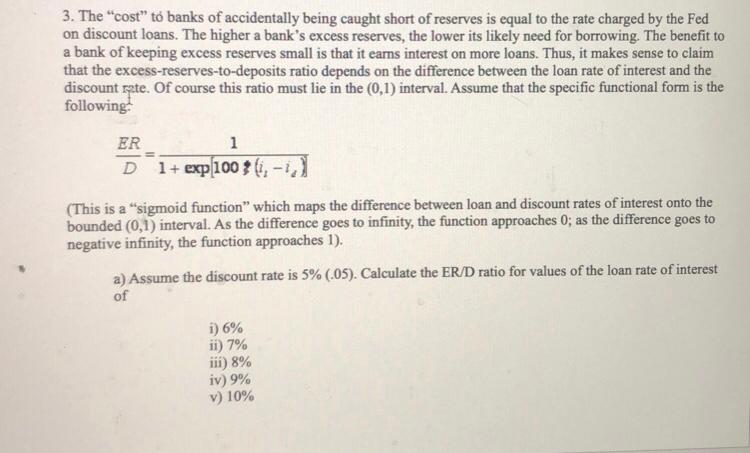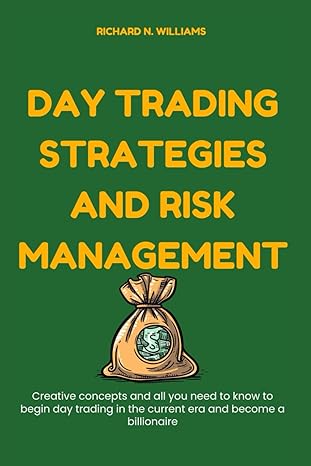Answered step by step
Verified Expert Solution
Question
1 Approved Answer
all the info is given plz help out 3. The cost to banks of accidentally being caught short of reserves is equal to the rate

all the info is given plz help out
3. The "cost" to banks of accidentally being caught short of reserves is equal to the rate charged by the Fed on discount loans. The higher a bank's excess reserves, the lower its likely need for borrowing. The benefit to a bank of keeping excess reserves small is that it eams interest on more loans. Thus, it makes sense to claim that the excess-reserves-to-deposits ratio depends on the difference between the loan rate of interest and the discount rate. Of course this ratio must lie in the (0,1) interval. Assume that the specific functional form is the following! ER 1 D 1+ exp 100 li,-) (This is a "sigmoid function which maps the difference between loan and discount rates of interest onto the bounded (0,1) interval. As the difference goes to infinity, the function approaches 0; as the difference goes to negative infinity, the function approaches 1). a) Assume the discount rate is 5% (.05). Calculate the ER/D ratio for values of the loan rate of interest of i) 6% ii) 7% iii) 8% iv) 9% v) 10% 3. The "cost" to banks of accidentally being caught short of reserves is equal to the rate charged by the Fed on discount loans. The higher a bank's excess reserves, the lower its likely need for borrowing. The benefit to a bank of keeping excess reserves small is that it eams interest on more loans. Thus, it makes sense to claim that the excess-reserves-to-deposits ratio depends on the difference between the loan rate of interest and the discount rate. Of course this ratio must lie in the (0,1) interval. Assume that the specific functional form is the following! ER 1 D 1+ exp 100 li,-) (This is a "sigmoid function which maps the difference between loan and discount rates of interest onto the bounded (0,1) interval. As the difference goes to infinity, the function approaches 0; as the difference goes to negative infinity, the function approaches 1). a) Assume the discount rate is 5% (.05). Calculate the ER/D ratio for values of the loan rate of interest of i) 6% ii) 7% iii) 8% iv) 9% v) 10%Step by Step Solution
There are 3 Steps involved in it
Step: 1

Get Instant Access to Expert-Tailored Solutions
See step-by-step solutions with expert insights and AI powered tools for academic success
Step: 2

Step: 3

Ace Your Homework with AI
Get the answers you need in no time with our AI-driven, step-by-step assistance
Get Started


